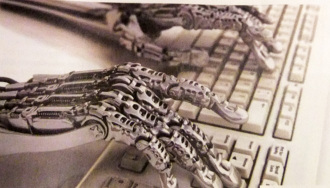The idea of a smarthome has been with us for a long time. With the development of automation in factories and assembly lines came the image of the automated home. By the 1930’s The “House of Tomorrow” was a staple at World’s Fairs, and featured numerous devices intended to replace or augment the declining use of servants in the home.

But there were numerous barriers to entry in the 30’s and 40’s – a big one was the fact that many homes were dealing with the economic fallout from the great depression. Also, the capabilities of the new labor saving devices were extremely limited. Yes, you could get an electric pop-up toaster (introduced in 1919, but until 1933 you still had to have a person slice the bread, put the toast in, wait for it to pop up, and get it to the table. The same was true for the most of the devices that were coming onto the market – they required extensive operations by members of the household. Hardly ‘home automation!’
There was another resurgence of the home automation concept in the 50’s and 60’s – but the controls were primarily limited to turning something on, or turning something off. Yes, you could turn on the reading light without getting out of the recliner – unless you had to get up to find the remote, a task that was so common it spurred the invention of “the Clapper” in 1985. This sound activated on/off switch solved the problem of having to get up to find the remote light switch. What a difference there is between “clap on; clap off” and the power of today’s Internet enabled devices!
Today, with the growing number of home and lifestyle devices with internet connectivity the problem has changed. It is no longer about finding a smart thermostat or an internet enabled doorbell: it is about integrating all of these devices into a seamless system – without having to hire a full time IoT manager for you house.
IoT and the smart home
Mary lives alone, she prefers it that way. Her daughter drops in to visit several times a week, but is busy with her new job and lives across town. Today Mary has a bit of a headache, and hopes that it is not a cold coming on. Last year she got bronchitis. It is a little before noon, but she decides to go upstairs and lie down to take a nap. Living alone she has gotten in the habit of thinking out loud, so she says to herself “I think I’ll go take a nap for an hour.”
The bedroom is a little cold; the new thermostat is supposed to reduce her heating bill, but it is also supposed to learn her habits so that she is not uncomfortable. Mary thinks that it has a lot of learning to do. Her daughter tried to explain how to override the programs, but at 68 she figures she’ll probably never learn. As she tries to fall asleep in the chilly room, she realizes that she left the radio on, and the muted voices from her favorite talk show are keeping her awake. That was another of those Internet things that her daughter got to make her life better, but it is a lot more complex than her old radio.
At the front door, a scruffy looking man presses the button on the video doorbell. Inside the house Mary’s cell phone rings, but she left it in the kitchen so she doesn’t hear it.

When there is no answer at the door, the man waves to his friend in the pickup truck who joins him. As they walk around the house and into the backyard, the man slides the crowbar out of his jacket, and hefts it.
As you can see, there are lots of smart devices in Mary’s home – but they are all independent devices which take individual setup and management. As if a large household in the 1880’s had maids and cooks and cleaners but they never spoke with each other. What the ‘intelligent’ household of the 1880’s had was a housekeeper / major domo / senior butler who arranged and orchestrated the staff.
IoT and the integrated home
Mary lives alone, she prefers it that way. Her daughter drops in to visit several times a week, but is busy with her new job and lives across town. Today Mary has a bit of a headache, and hopes that it is not a cold coming on. Last year she got bronchitis. It is a little after noon, but she decides to go upstairs and lie down to take a nap. Living alone she has gotten in the habit of thinking out loud, so she says to herself “I think I’ll go take a nap for an hour.”
The house AI hears her and checks the temperature in the bedroom. Sensing that it is a little too cool, a command is sent to the Internet enabled thermostat and the room begins warming up before Mary starts up the stairs.
The bedroom is a pleasantly warm, the new thermostat her daughter bought her is doing its job. As she starts to fall asleep, she realizes that she left the radio on. “Turn the radio off,” she says to the house.
The house AI sends a command to the new IoT radio, and the volume is muted.
That was another of those Internet things that her daughter got to make her life better, and Mary is glad that she didn’t have to go downstairs and turn it off by hand. She drifts off to sleep.
At the front door, a scruffy looking man presses the button on the video doorbell. Inside Mary’s cell phone rings, but she left it in the kitchen so she doesn’t hear it.
The house AI sends a command sequence to the video doorbell, and the man hears a masculine voice ask “Yes, what is it?”
When the man hears the voice over the intercom he answers that he is in the neighborhood cleaning gutters, and wants to know if they want the gutters cleaned.
The house AI processes the voice input and says, “No thank you, we are not interested.” and directs the video doorbell to capture a high resolution image of the person.
The man waves to his friend in the pickup truck and walks back to the sidewalk. They have a quick conversation and decide to pick a different block for their next attempt.
The house AI posts a description of the conversation along with the photograph to the neighborhood information website. It follows up with an email to Mary’s daughter and a suggestion that she drop by tonight on her way home from work.
Mary wakes up an hour later feeling refreshed and with her headache gone. She goes downstairs to get a cup of tea and get ready for her book club meeting at 3pm. This month they are reading a mystery novel about a home burglary that went fatally wrong.
What the household of the 2020’s needs is that intelligent major-domo to manage and orchestrate the estimated 500 IoT devices projected to be in the average home by 2020.




